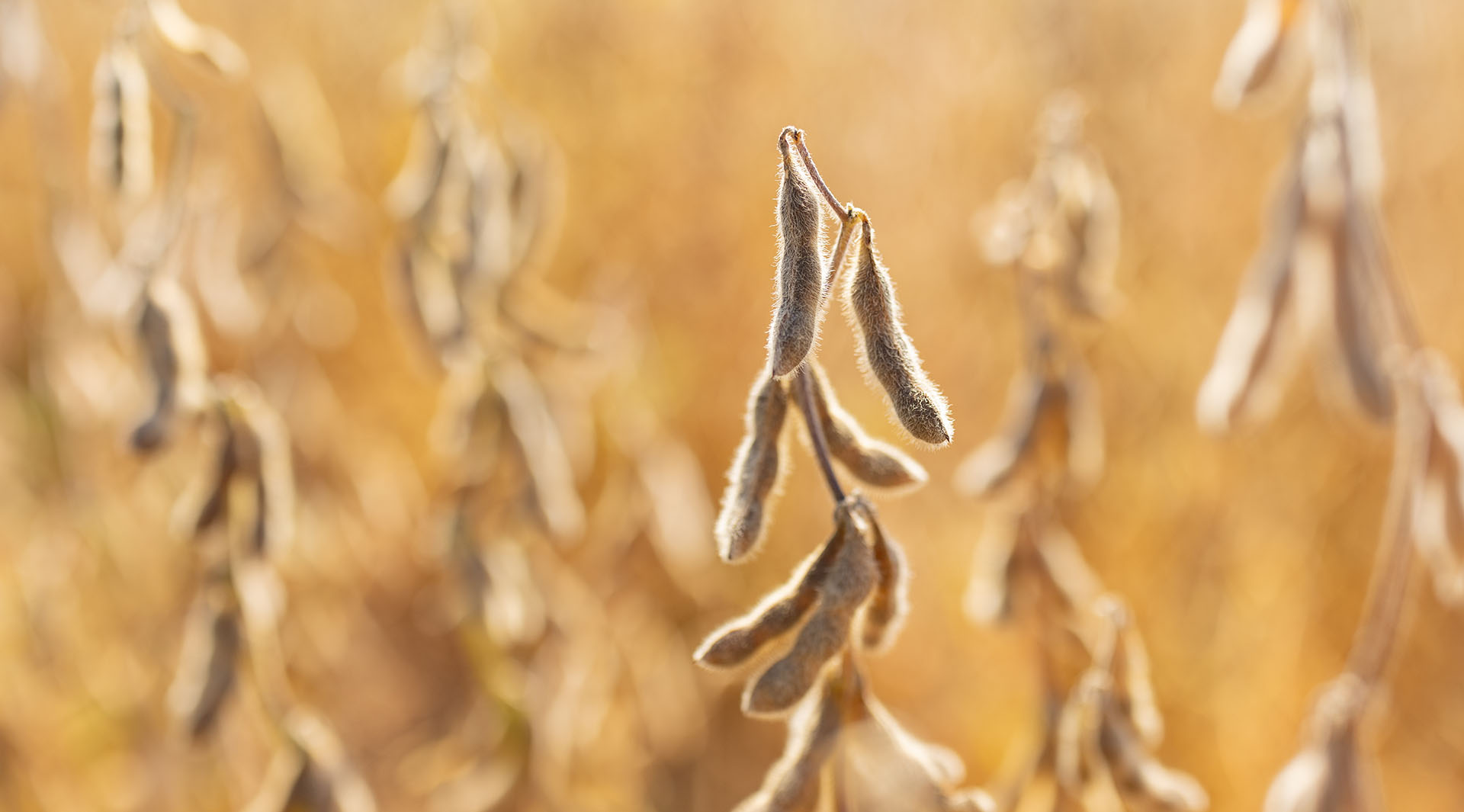
(Photo: Iowa Soybean Association / Joclyn Bushman)
Walking Rows: ISA agronomists update – October 10
October 10, 2024 | Kriss Nelson
As farmers are nearing the end of soybean harvest, Iowa Soybean Association (ISA) research agronomists are sharing soybean yields ranging from 50-100 bushels per acre. Corn harvest is now under way in many areas of the state with yields reported on both sides of the 230 bushels to the acre mark.
Research agronomists recommend farmers conduct soil tests in the fall to assess soil fertility levels before considering reducing or eliminating fertilizer usage for cost-cutting purposes.
Drew Clemmensen – Northwest/Western Iowa
Harvest has progressed very quickly this fall, despite a slow, prolonged planting season.
Most farmers report finishing soybeans harvest in the last 3-5 days south of Highway 18. Yields continue to be strong with the April planted soybeans pushing upper 60 to mid-70s bushels to the acre and the mid-May planted beans right behind them at lower to mid-60s.
Also north of Highway 18 soybean harvest is approaching 50% harvested with some yields falling into the lower 50s.

North of Hwy 18, very little corn has been harvested. There is a lot of variability in dry down in this corn crop even within fields which has been very evident by the number of fields that have been opened up and only 1/4 to 1/3 of the field harvested. Wet spots and replant acres look to be a week or better away from harvest in these fields.
With harvest progressing as fast as it is, it will be hard to hold off on nitrogen applications until the soil temperature is 50 degrees and trending lower - even with the use of nitrogen inhibitors.
Soil moisture levels are also of concern with NH3 applications. If we get some rainfall this month into November, I would feel more confident about making these applications.
In a market environment where input costs and rates will be closely considered, fertilizers still need to be evaluated and considered for next year’s crop. This highlights the need for soil testing to ensure fertility levels are adequate to meet next year’s yield goals.
Lucas DeBruin – Southeast/Eastern Iowa
Yields have been good to great in my area of 60-80 bushel soybeans, and 230 and up for corn. Everything has been drying down fast and I've noticed some corn is starting to fall apart; that concerns me on the standability impact that has for harvest. Those hybrids should be a priority to harvest first.
With tight margins going into next year, if you are wanting to cut spending somewhere and think fertility is the best place to start, I advise to soil test first to gauge where your current soil fertility levels are. If you decide to cut rates, do so as a system, don't just pull or cut one item.

Watch soil temps as we are getting closer to NH3, remember nitrogen stabilizers don’t work year around. These products only have a limited life in the soil before they are broken down and aren’t effective. You can apply early in the fall and lose it in the spring or apply later in the fall and utilize it in the spring. The warmer the soil temps, the faster the conversion goes.
Shane Beck – Northeast/Northern Iowa
In my area, soybean harvest is quickly wrapping up with the exception for replant acres. Average yields ranged from 60 to 75 bushels to the acre, with one field averaging 100 bushels to the acre on some early-planted soybeans.
Farmers are quickly shifting over to combining corn. I have been hearing that farmers are averaging 200-250 bushels to the acre across the harvested corn acres so far. The corn is also coming out dry as well. I have heard anywhere from 14-18% for corn planted from mid-April to mid-May.

Residue management has become a topic of discussion with some farmers over the last few months. Especially in no-till soybean fields.
This is a great opportunity to conduct a trial using a biological stimulant assisting in residue decomposition and the release of nutrients into the soil. The biological stimulant is sprayed in the fall after the crop has been harvested.
We are also looking at the effects residue has on planting speed, fuel efficiency and planting uniformity.
If this interests you, feel free to contact me, and we can discuss whether it is a good fit for your operation.
Mikaela Connelly – Southwest/Western Iowa
For soybean yields, lower numbers are coming in at 60 bushels to the acre, with higher yields at 75 to 80 bushels to the acre. It’s been a good bean crop so far, which is great given the start of the season and how delayed some people were getting into the field.
Unfortunately, I've consistently heard about 8% moisture for the beans, which isn't ideal.
For corn, I have been told of yields around 200 fairly consistently. I am hoping to report more numbers as growers switch over to harvest corn acres.
A few of the trials I am conducting have been harvested, with no results available yet. However, I'm excited to see how our fungicide plots turned out, as this summer had some ideal conditions for diseases with the humidity and moisture.
For fall anhydrous, first and foremost, wait for ideal conditions for application. With how dry it's been, we really need adequate moisture in order to prevent anhydrous from volatilizing and being lost, and the soil temperature needs to be around 50 degrees Fahrenheit consistently.

I would say a key consideration is using a nitrogen inhibitor, as this spring, a lot of nitrogen was lost from fields due to the amount of moisture received. Even though we're not sure how next spring will be, the inhibitor will delay leaching because the breakdown of nitrogen is slower with the use of an inhibitor.
If wondering about fertilizer, crop prices, and inputs, I would consider potentially doing a split application to even out the expenses.
If you are interested in learning about your farm-specific agronomic and economic optimum nitrogen rate, I would love to meet with you as ISA has a research trial that investigates finding these numbers per operation. With nitrogen being such a key part of our inputs and crop rotation, it is definitely interesting to see the results on a per-farm basis and calculate if nitrogen is being under or over-applied.
I am excited to hear more yield numbers from growers, and hope everyone continues to stay safe.
Back